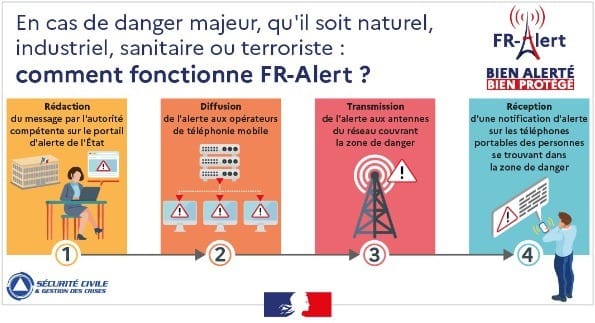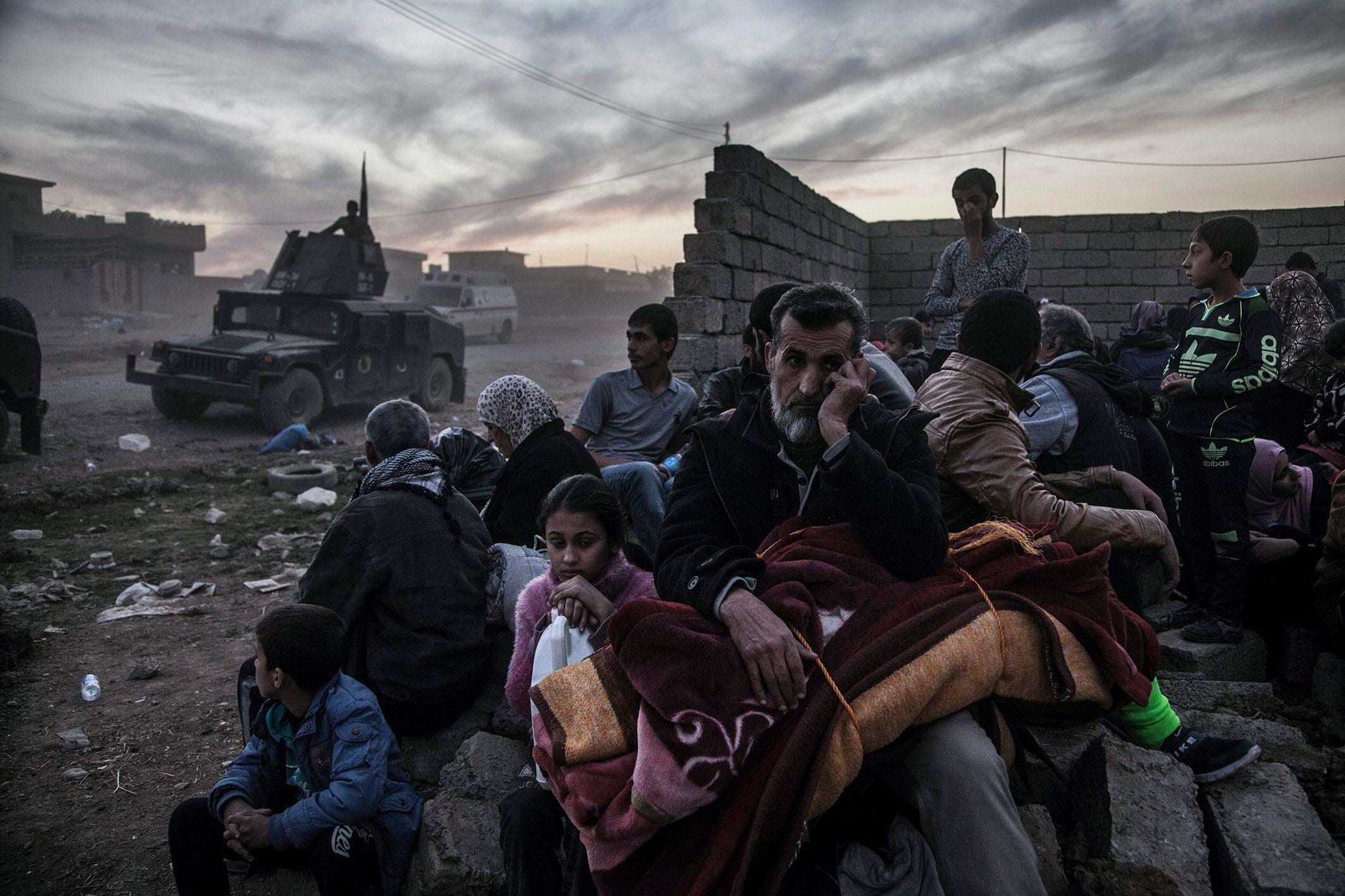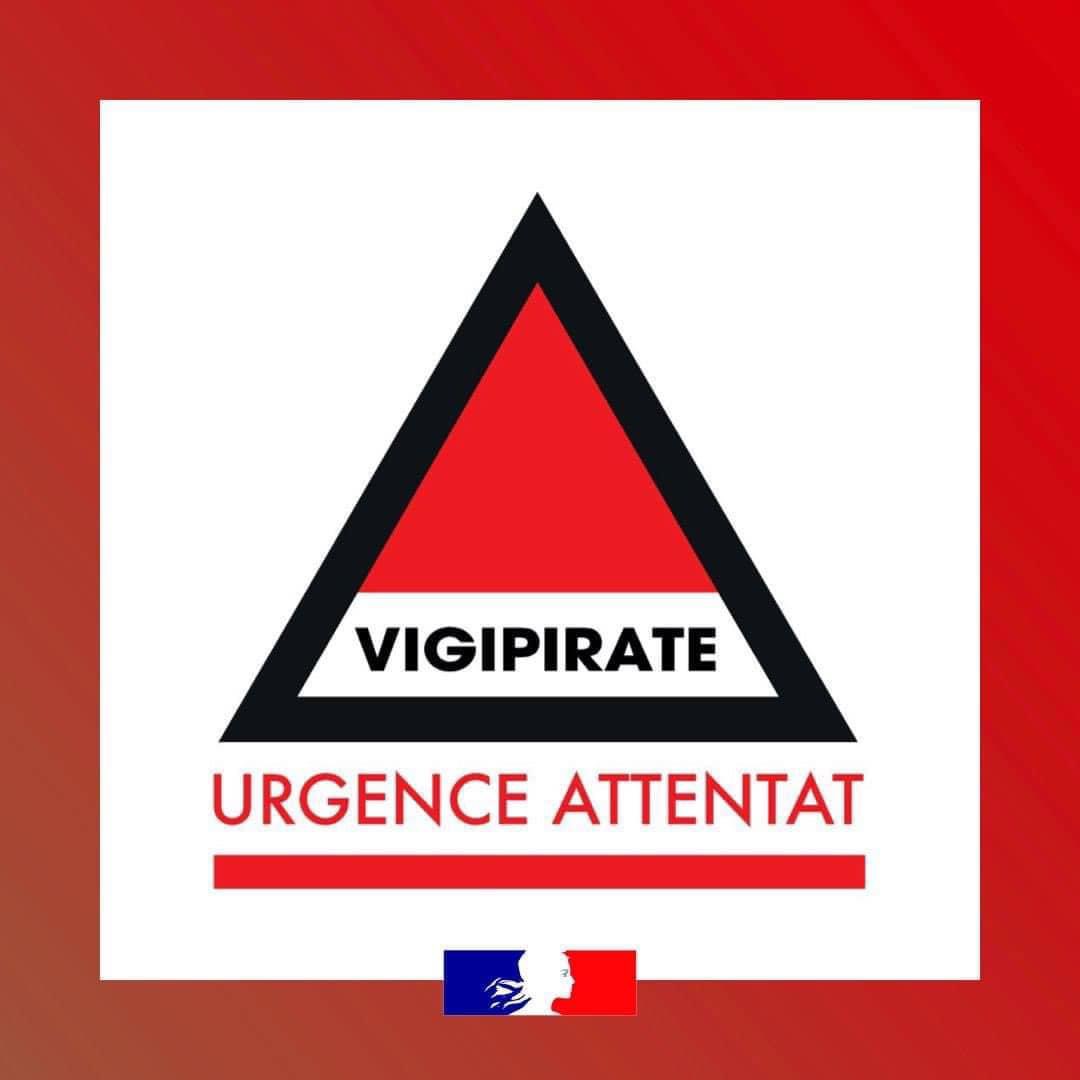Safety
CHECK OUT THE LATEST ALERTS IN FRANCE
WHAT IS AN FR-ALERT?
In the event of a major natural, industrial, health or terrorist hazard: how does FR-Alert work?
FR-Alert is the new population alert and information system. Deployed nationwide since the end of June 2022, FR-Alert enables anyone with a cell phone to be notified in real time of their presence in a danger zone, informing them of what to do to protect themselves.

If you find yourself in one of the zones concerned by an imminent danger, you may receive a notification accompanied by a specific sound signal, even if your cell phone is in silent mode. DON’T PANIC! It may sound quite loud but this new system is being tried out throughout France (and the UK) so it is most likely to be a test.
THE TECHNICAL STUFF
FR-Alert is a new population alert system that allows notifications to be sent on mobile phones of people present in an area affected by a major incident. Developed by the Ministry of the Interior, this system has been operational on the national territory since June 21, 2022.
The FR-Alert system is based on cell broadcast technology. The alert messages are broadcast in the form of radio waves by telecommunication antennas and not by SMS, in order to avoid overloading the network in the event of sending to a large number of persons. This cellular broadcast device is active in the metropolitan departments for 4G and 5G mobile phones, and will be active by the end of 2022 for 2G and 3G devices.
The cellular broadcast will be complemented by the geolocated SMS system operating on 2G or 3G from the end of 2022. Notifications will be sent as a standard SMS.
FR-Alert is designed to alert anyone present in the danger zone through telecommunications networks. It is not necessary to register in advance to receive alerts or to download a mobile application.
If you are in an area facing a threat or serious danger, you will receive a priority notification that arrives at the same time on all mobile phones. It appears on the screen even if it is locked, and may be accompanied by a specific sound signal and vibration.
On the other hand, the alert notification will not appear on phones that are switched off or in “airplane mode”.

Notifications may transmit information on:
- the nature of the risk (fire, flood, industrial accident, etc.);
- the location of the danger (establishment, district, municipality, conurbation, department, etc.);
- the authority issuing the alert;
- the location of the danger (establishment, district, municipality, conurbation, department, etc.);
- the attitude to adopt (stay at home, evacuate the area…);
- where appropriate, a link to obtain additional information on an official website.
Additional information on the development of the situation and the end of the alert shall be disseminated by notification in the same geographical area.This system complements the population alert and information system (SAIP), which includes more than 2,000 sirens connected to remote triggering software, the mobilisation of television and radio stations for the dissemination of alert messages and the dissemination of institutional accounts on social networks. The Ministry of Interior has also launched a dedicated Twitter account.
What events are involved?
The use of FR-Alert is limited to emergencies, imminent or ongoing hazards, which involve alerting the population located in the danger zone to recommend self-protection.
The major events that can be subject to alert notification are:
- natural events: flood, storm and cyclone, fire, tsunami, volcanic eruption…;
- biological, chemical and nuclear accidents: pollution, gas leakage, nuclear incident…;
- health hazards: epidemic, pandemic, agri-food incident…;
- technological and industrial incidents: breakdown of telecommunications means, serious accidents on road, rail or air networks, industrial incidents, etc.;
- serious public security event, terrorist attack.
FIND OUT MORE ABOUT ETAT D’URGENCE AND URGENCE ATTENTAT


